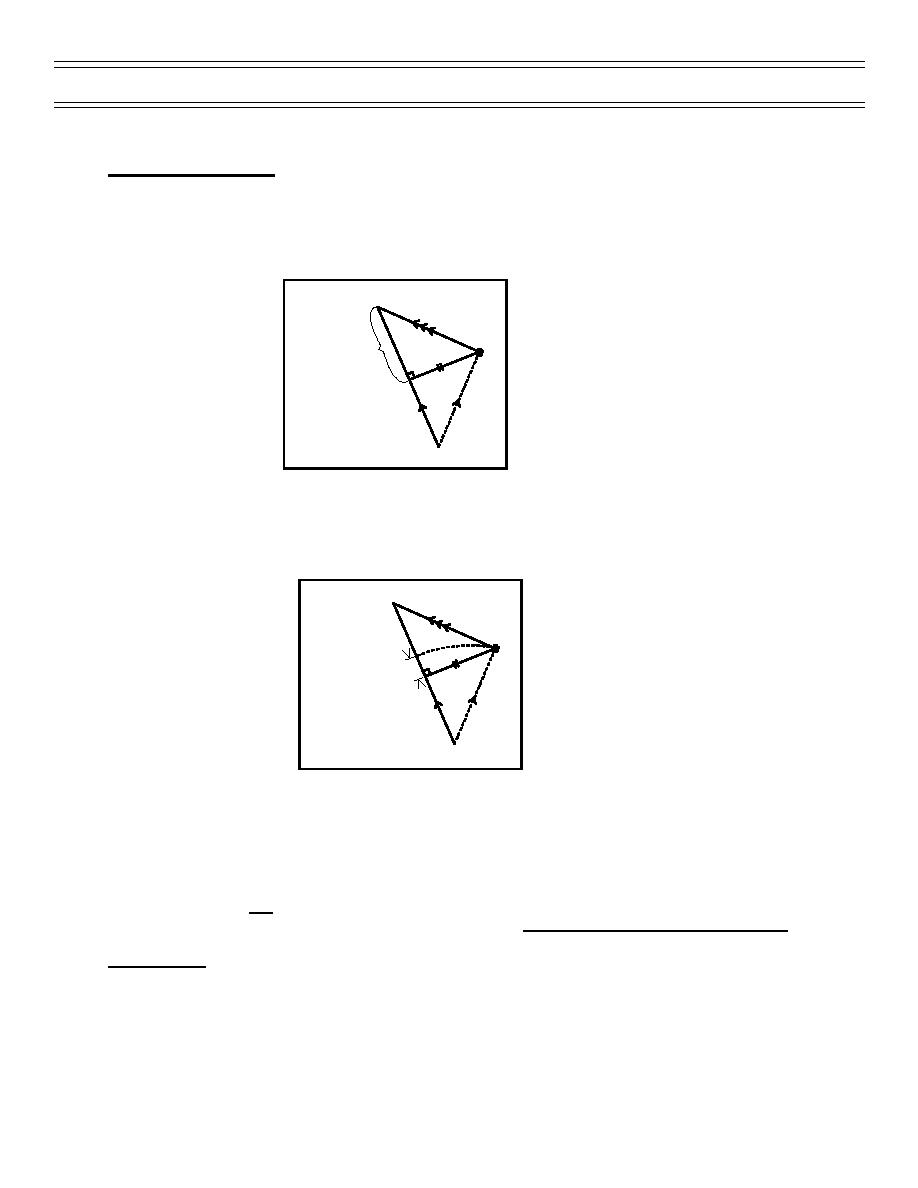 |
|||
|
|
|||
|
|
|||
| ||||||||||
|
|  T-45C TS INav-08
Fuel, Weather, and Alternate Airfield Planning
Eftective True Airspeed
That portion of the wind triangle on the computer above or below the midline represents the headwind or
tailwind component respectively that has to be added or subtracted to/from the TAS to solve for ground
speed.
Headwind
component
Now, as we are adding or subtracting this component from the TAS we in essence have to swing the
length of the TAS line to the CUS/GS to subtract to get ground speed.
Difference
between
TAS and ETAS
When the drift angle is less than 10 degrees, you get an error of less than 1/2 of 1% (.005) but with a drift
angle greater than 10 degrees the error climbs to 1 1/2% or greater so we have to compensate for it in
some way. We use the “Cosign” of the drift angle. The designers of the Air Navigation Computer have
provided a handy “Cosign” scale just to the left of the TAS index. To find the “Effective True Airspeed” find
the drift angle, to the left of the TAS index, on the black cosign scale and directly above read the “Effective
True Airspeed”. Use this ETAS with headwind or tailwind to get the effective ground speed for that
particular leg. The drift angle correction needs only to be used if the drift angle is 10 degrees or greater.
Groundspeed
There are two types of winds associated with flying operations, TRUE and MAGNETIC. The surface
winds you receive from Approach/Departure Control and Airport Traffic Control Towers are MAGNETIC
winds, which coincide with the magnetic direction of runways. The en route winds you receive from the
forecaster are TRUE winds, and are taken from the teletype Winds Aloft Forecast (FD).
(2-02) Original
Page 8-14
|
|
Privacy Statement - Press Release - Copyright Information. - Contact Us |